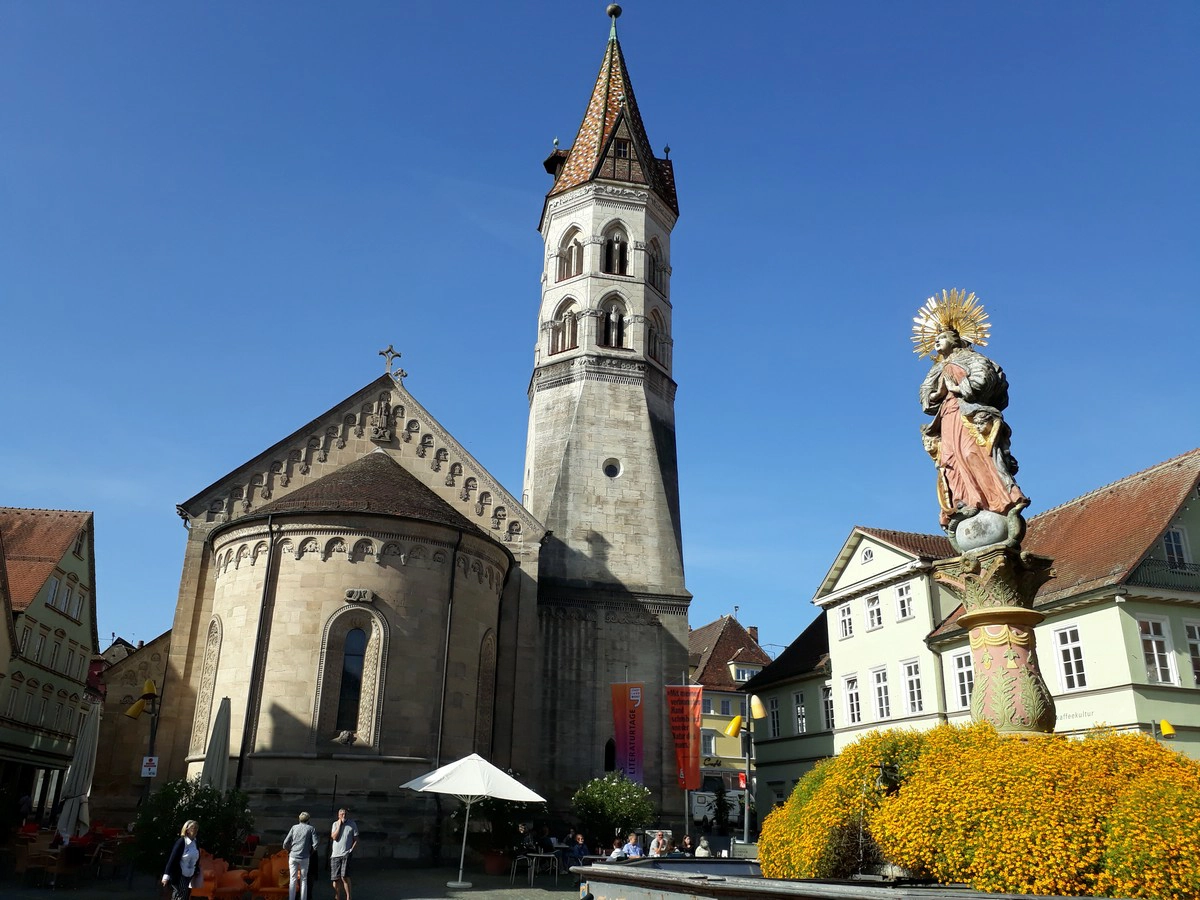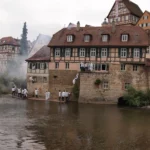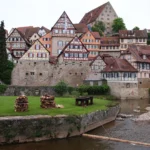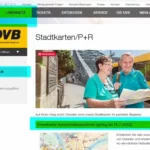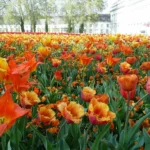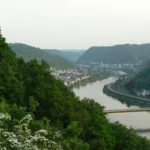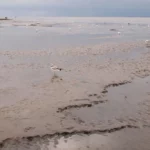Last Updated on 19/11/2023
Schwäbisch Gmünd and Aalen lie on the “short” road from Stuttgart to Nuremberg. Here the Swabian Alb ends, passing into the hilly Swabia, with deep winding valleys in which tributaries of the Neckar flow – three tributaries begin near Aalen. Previous generations fully appreciated the landscape: the Romans and medieval Swabians left in the region the remains of ancient Roman fortresses and a chain of half-timbered towns with city walls.
The region is suitable for excursions from Stuttgart or Ulm or for short holidays.
From Ulm to Ellwangen. Albtrauf and Bavarian Swabia
Places to visit near Stuttgart. Map
Swabian Alb map
Romantic Franconia
Esslingen Old town and map
Ludwigsburg palace and gardens
What to see in Stuttgart
Bad Urach Waterfall
Half timbered houses in Germany through history
High-speed railways in Germany are developed only along the perimeter – here the high-speed train travels slowly at first along the Rems valley, which, after the watershed in Aalen, turns into single-track along the Jagst valley. On the one hand, you can’t get to large cities quickly, on the other hand, almost all interesting towns are connected by railway, which is not the case everywhere.
Aalen
Aalen is the largest city in the region. At first it was the largest Roman castrum (camp) in the chain of Limes camps (the border line of Roman possessions, which, as if drawn by a ruler, goes through the whole of Swabia to the north). One version of the origin of the city’s name connects the name with the ala – a large detachment of Roman cavalry (a thousand men and a thousand horses) stationed in the castrum.
The Roman Museum is the most interesting thing Aalen has to offer. The museum is quite large, modern and manages to present a full-fledged Roman frontier life from a not very large number of exhibits. Every two years the museum holds international Roman days (they were in 2023).
Among the exhibits: bas-reliefs, a number of busts, small jewelry, various fasteners and other details of clothing, coins, shoes, ceremonial masks, some weapons. There is an ancient barrel (it’s amazing how it was preserved at all), scales, amphorae.
Maps and reconstructions show what it must have really looked like, where the limes were, and what was where.
In addition to the museum building, it is proposed to explore the excavations. These are the foundations of the administrative building of the castrum, which included the temple. The central exhibit is a reconstructed ancient Roman crane.


After the Romans, the place was not in great demand for many centuries. The founding of the city dates back to the 13th century, and already in the 14th century it received the rights of a free imperial city, but remained very small. The city center burned down in a fire in the 17th century.
You can see several old streets and a nice old town hall, restored after a fire. The old town hall houses a small geological and paleontological museum.
Of the decorations of the town hall tower after the fire, only the relief of the “spy of Aalen” was preserved. According to legend, when the city was threatened with attack by the Kaiser’s troops, the city sent its smartest resident as a spy to the Kaiser’s camp. Appearing there, he said: “Don’t be alarmed, I just want to count your guns and warriors, I am, in fact, a spy from Aalen.” The Kaiser liked the wisdom of the inhabitants so much that he did not touch the city.
Market Square with the Town Hall on the right. On the left has been the hotel and postal station of Thurn und Taxis (european postal monopolists from Regensburg) since the 16th century. Napoleon stayed here in 1805. In the 20th century the building also served as the town hall.
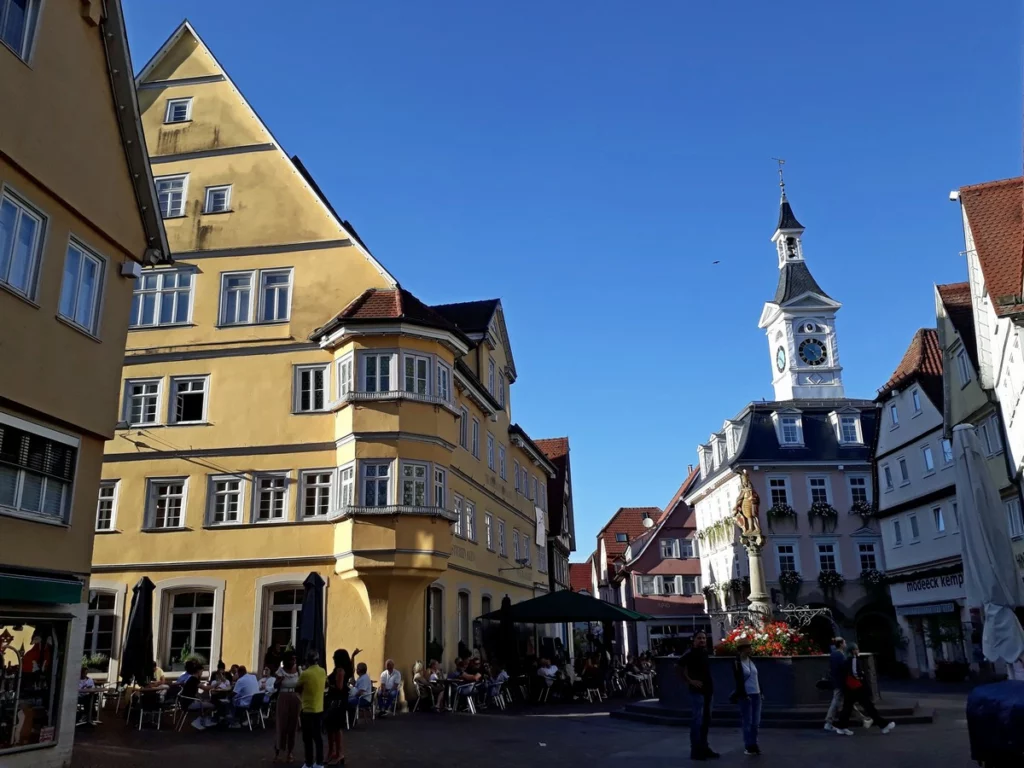
On the left are the oldest buildings in the city (17th century). On the right is a fountain with a figure of Kaiser Joseph I.
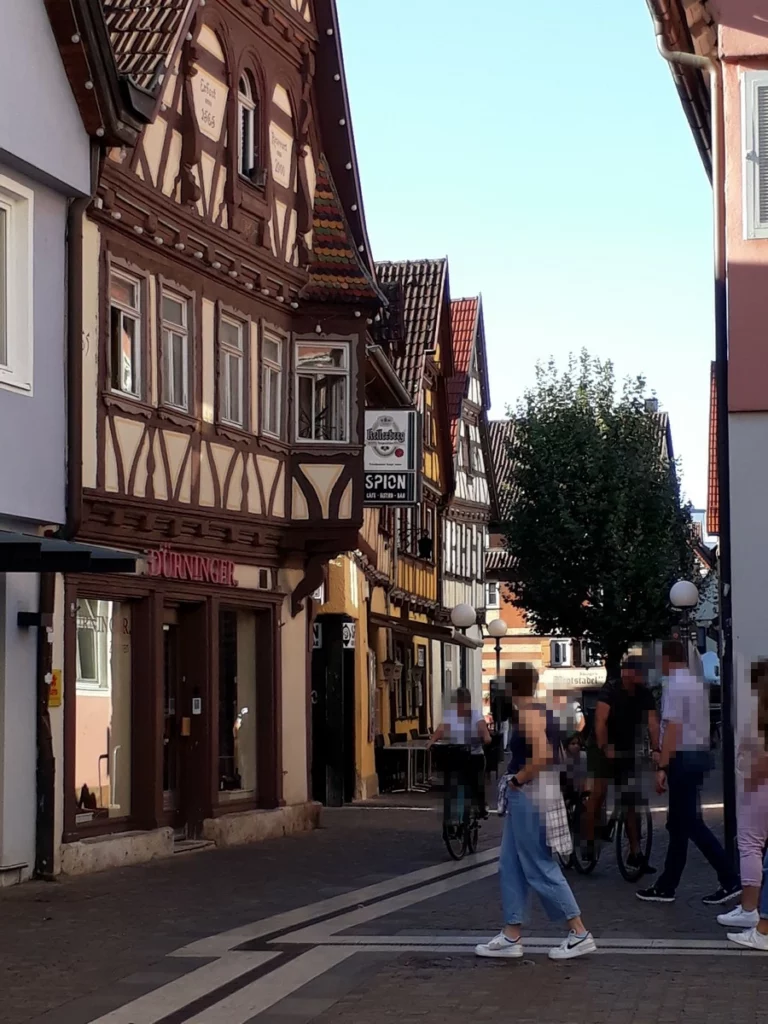

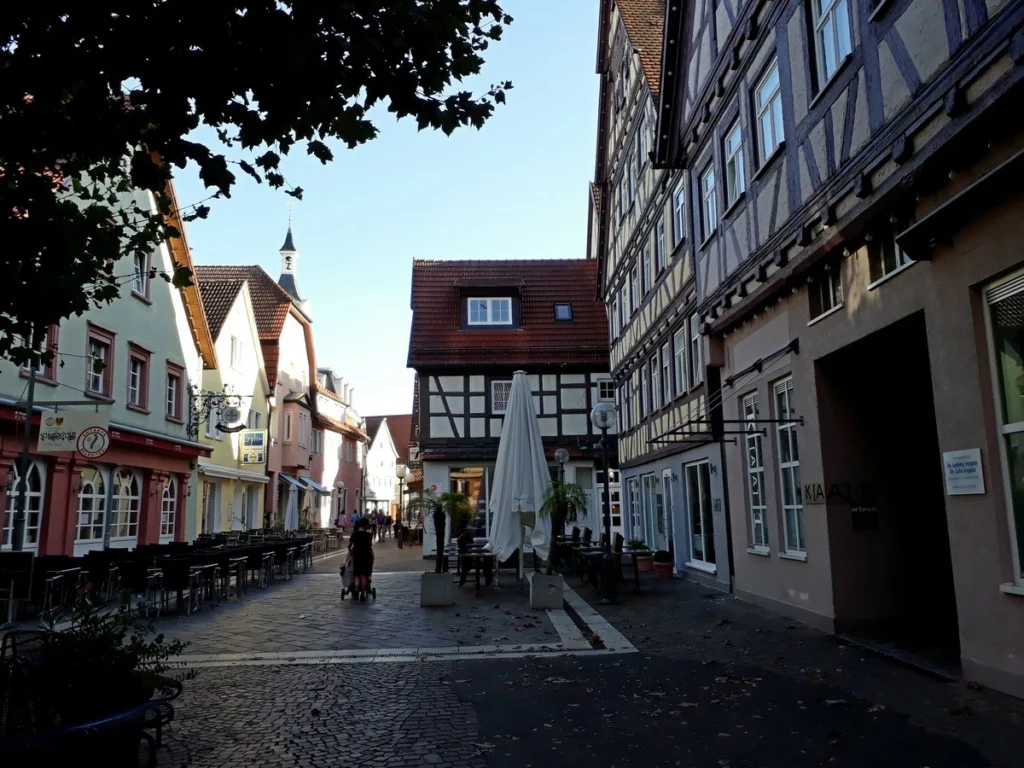
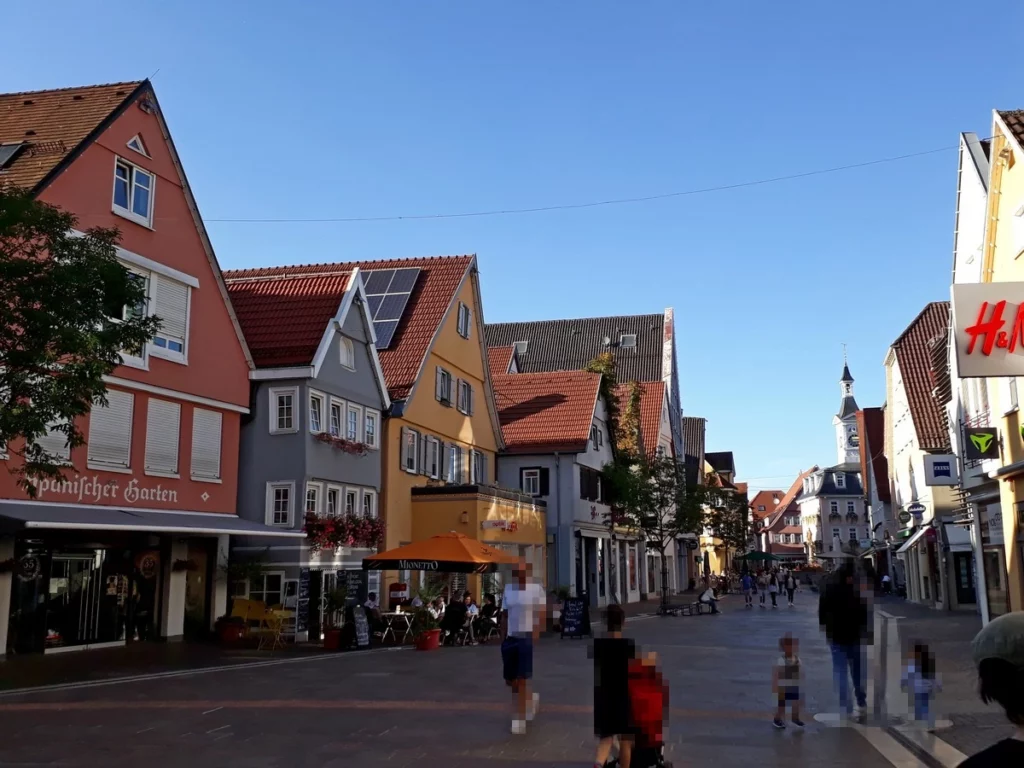
A couple more alleys and cozy squares with cafes – and that’s the end of the old center of Aalen. The churches of the city were damaged by fire, so they are not of great interest.
The entertainment program also includes:
– thermal pool Limes Therme (truly thermal, with very hot water and more suitable for treatment)
– Tiefer Stollen mines. In the mines they not only conduct excursions, but also treatment sessions for pulmonary patients and allergy sufferers
– small science museum Explorhino
Schwäbisch Gmünd
As a city, Schwäbisch Gmünd is more attractive than Aalen. It is surrounded by hills along which streams flow into the Rems River. Hence the name Gemünd – the place of confluence.
The regional garden show a couple of years ago benefited the city, leaving landscaped parks and a new recreation area at the top of the hill. Therefore, Schwäbisch Gmünd is a full-day excursion or even two days if you visit the city, its museums and the Himmelsgarten park and the nearby castle ruins.
The history of Schwäbisch Gmünd also began with a Roman camp, only its size was significantly smaller and little remained of it. The ruins of a small castrum are on the outskirts of the city.
In the 12th century, it was first mentioned as a city – earlier than other cities in the possession of the Staufers, and in the 13th century, with the disappearance of the Staufer dynasty, it became a free imperial city and remained so until the beginning of the 19th century, when it came under the rule of the Württembergs.
Schwäbisch Gmünd was a city of monasteries. There were four of them within the city walls alone. All monasteries were dispersed with the transition to Württemberg. But the old churches remained: St. Cross and St. John in the city center and three pilgrimage churches. The preserved city towers complete the harmonious appearance of the city, which you can enjoy from the small Zeiselberg hill.

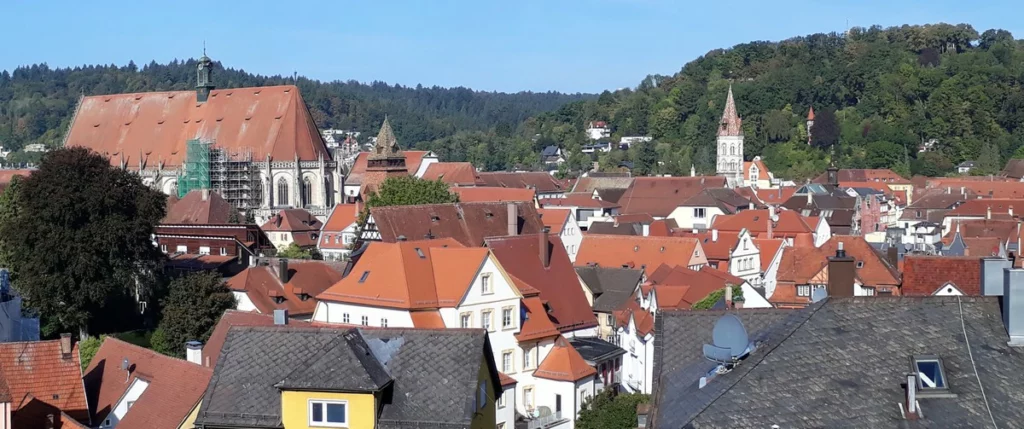
You can also climb the hill with a stroller. At the top, in addition to the observation deck, there are also slides for children. The city itself is generally very family-oriented, and in the summer there is even a playground in the main square.
But let’s go back to the station and walk through the city from there. The towers and remains of the wall are indicated by blue rectangles. The path of balls is indicated by a yellow line.
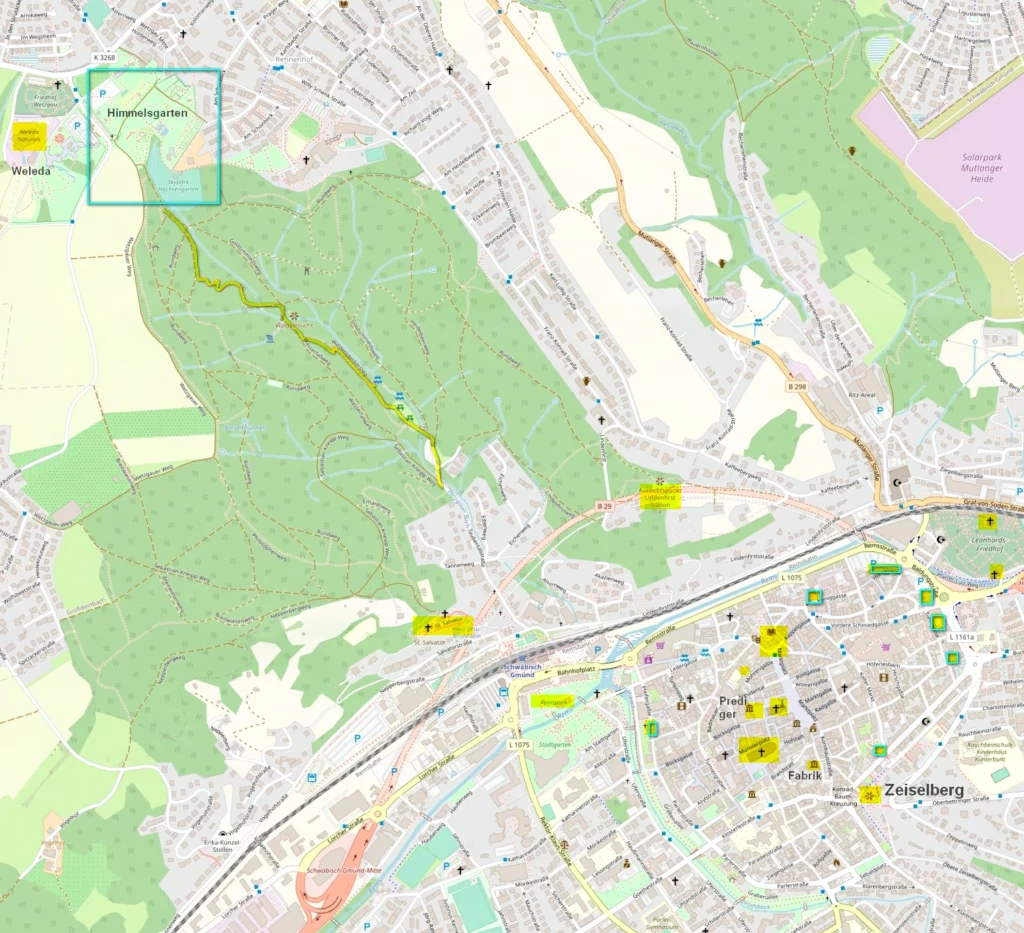
Right next to the station there is the Remspark, through which the Rems flows. Then the park area goes around the old center along the river and leads to the Zeiselberg hill.
There are two interesting buildings in Remspark:
the new Gold und Silber Forum (restaurant)
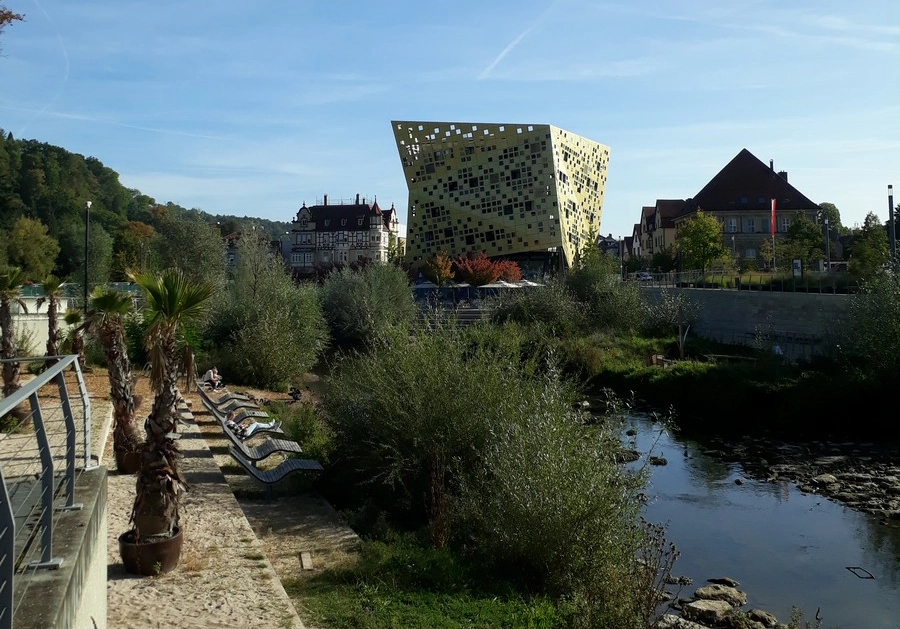
and an 18th-century Rococo palace built by one burgomaster for his wife.
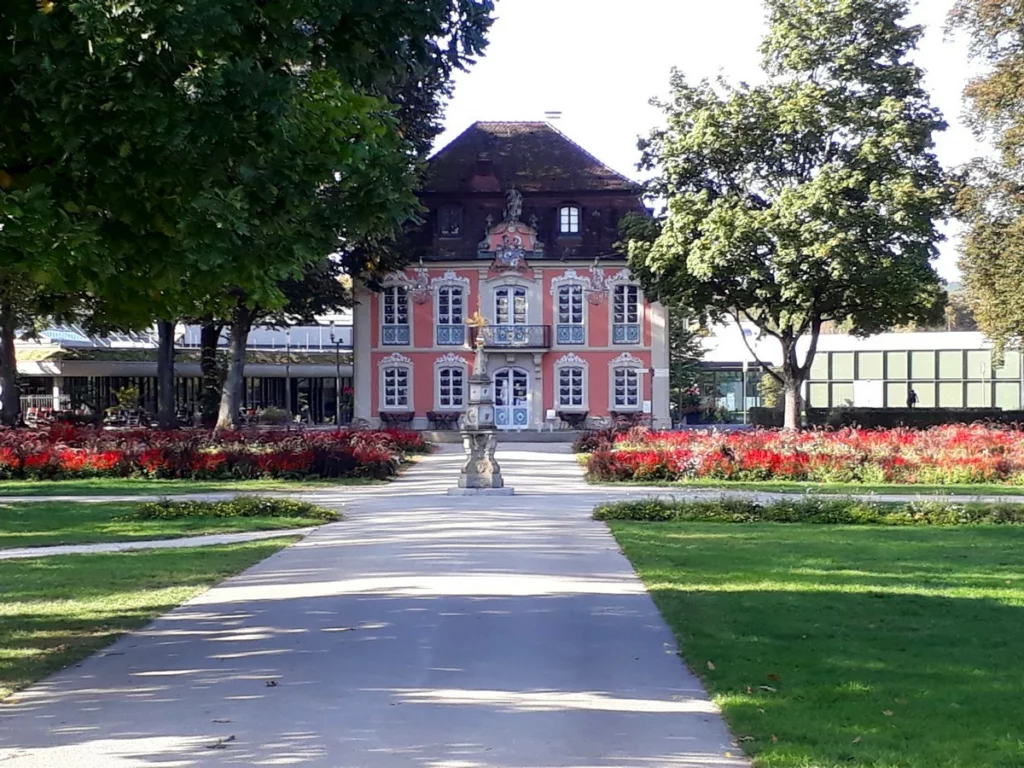
The most picturesque of the six surviving towers is also nearby – the Tower of Five Buttons (Fünfknopfturm, 15th century). You can climb the tower.
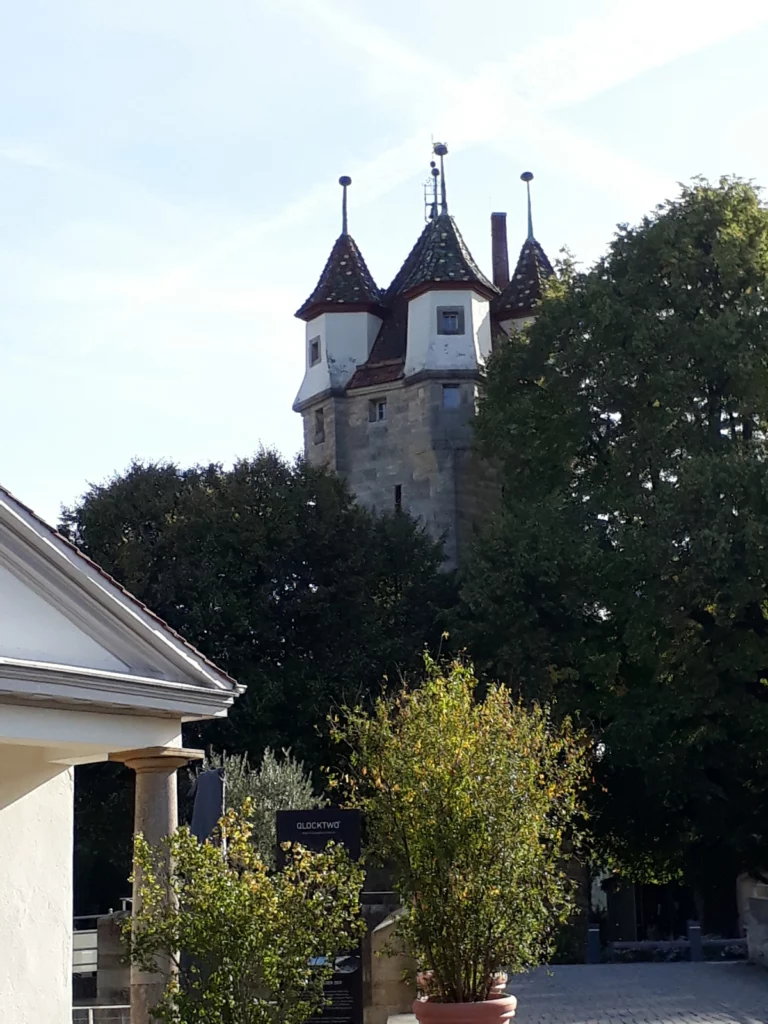

The old center is small, you will very quickly get to the very core – the Church of St. Cross (Heilig Kreuz Münster, 14-16 centuries).
This is a Gothic church in the form of a hall – it simply looks like a very large house with a turret in the center.
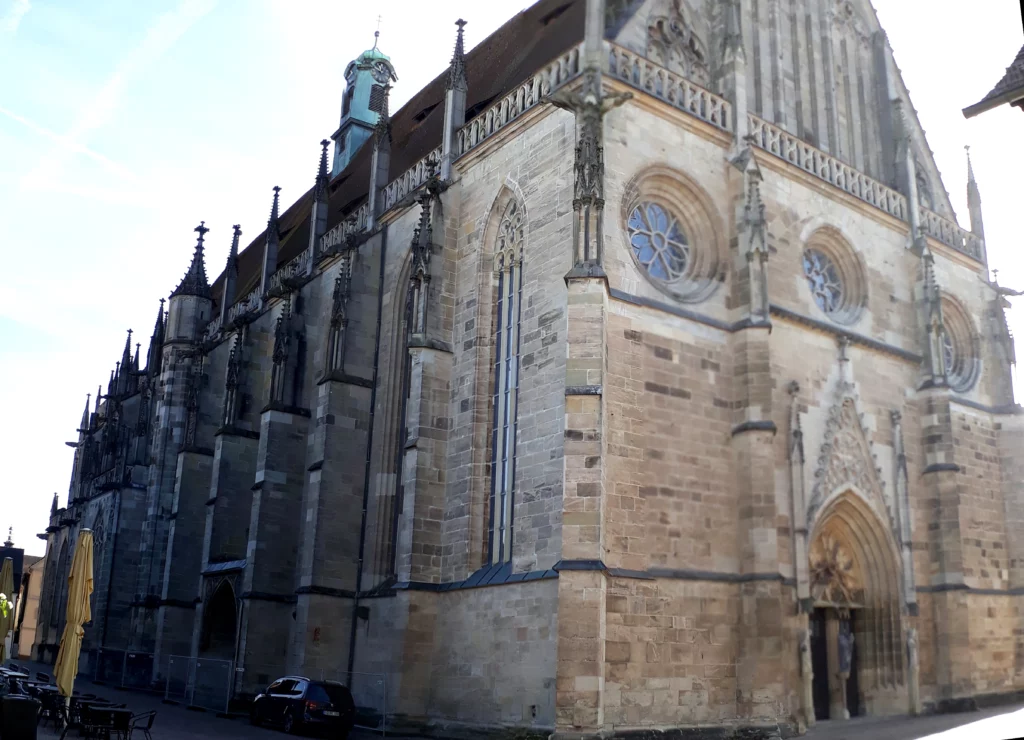
Some of the entrances are picturesque, others are more simple.
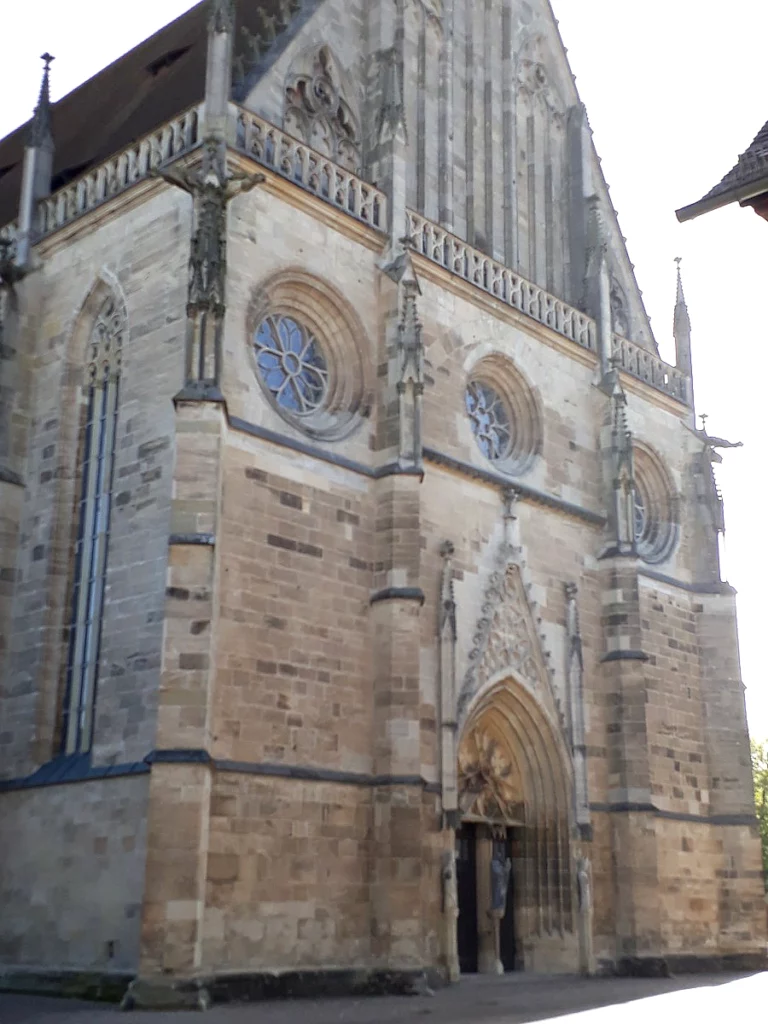
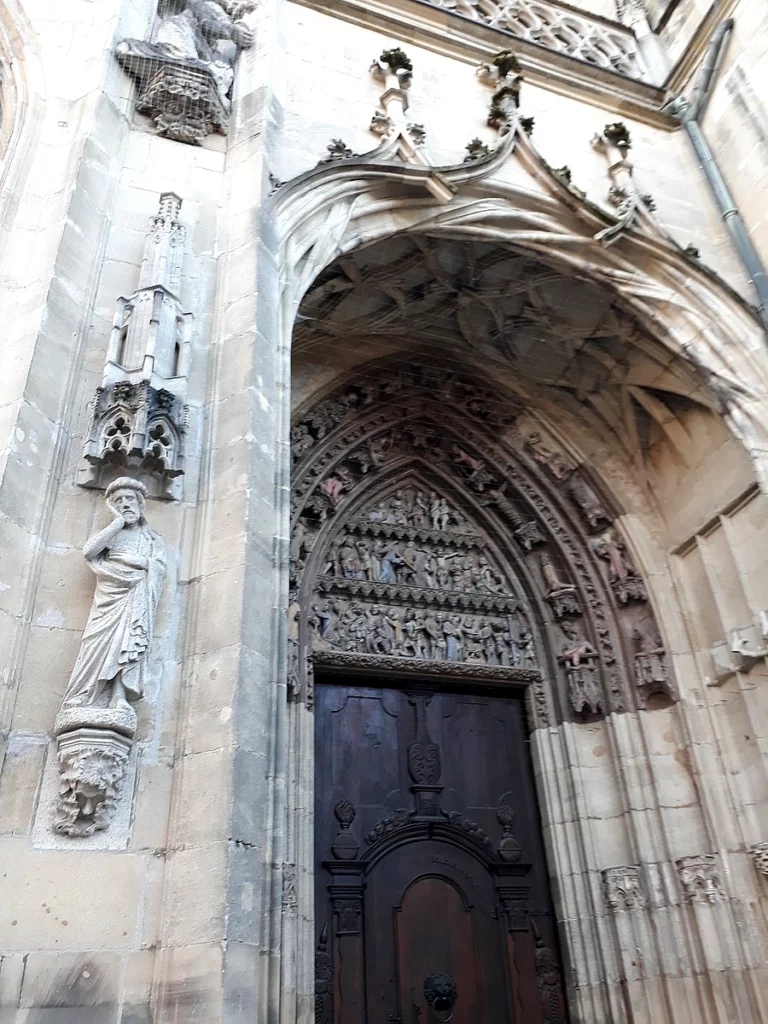
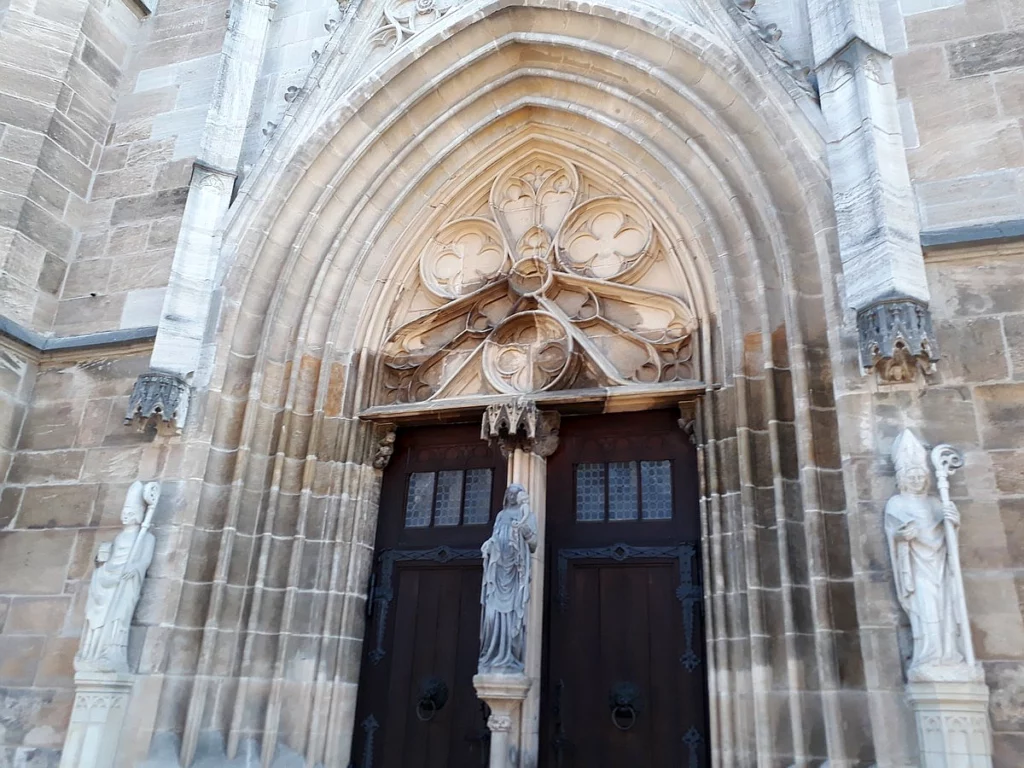

Inside there are slender columns, a carved ceiling and an interesting altar from the 16th century.

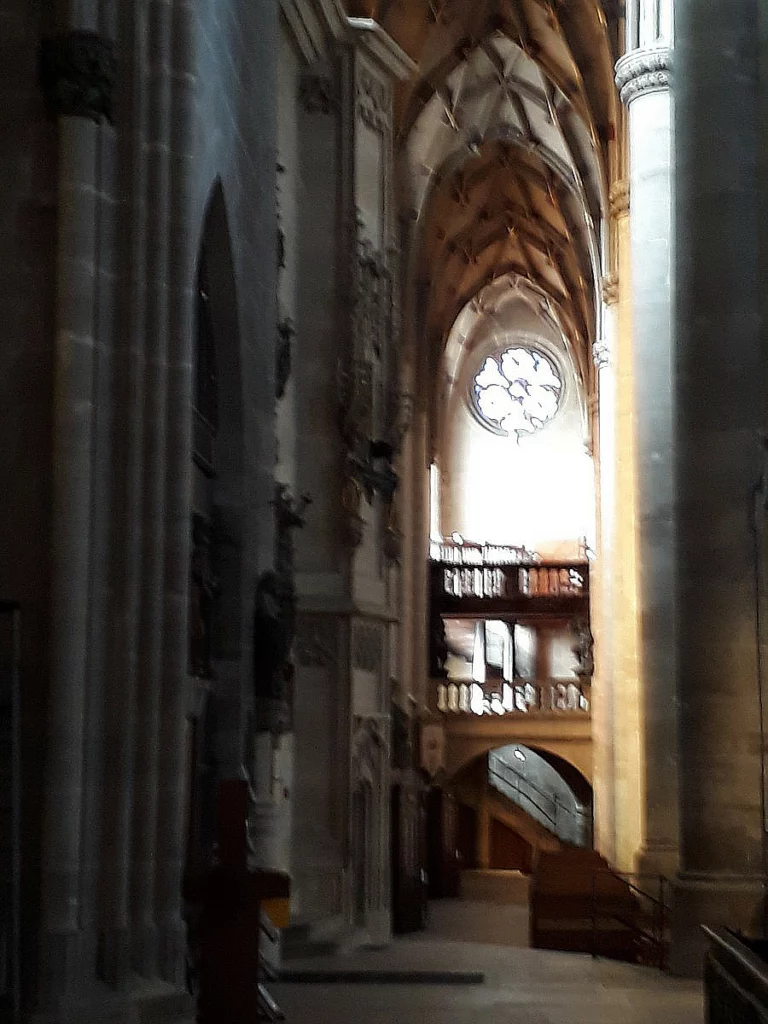
In the absence of a tower, the bell tower exists separately (second photo). Actually, the shape of the church and the absence of towers were not originally conceived – the towers simply collapsed, so it was necessary to rebuild what was there as a bell tower.


Along the cathedral there is a row of old houses.

A couple of side streets and we come out to the Church of St. John the Baptist (Johanniskirche, 13th century). I don’t remember a second such interesting church in the region. It’s a pity that you can’t take a closer look at all the decorations. You can climb the original crooked tower (renovated in 2023). Strange angle of the photo – due to the very bright sun.
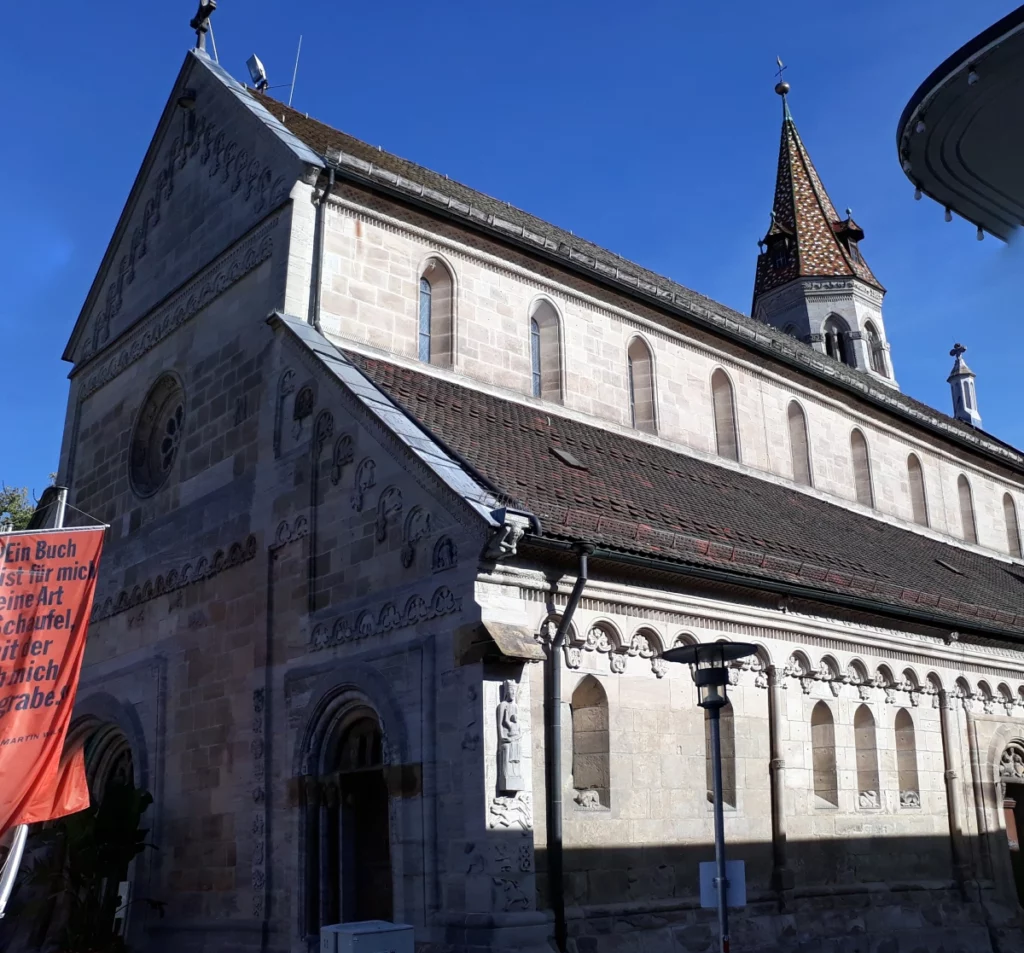

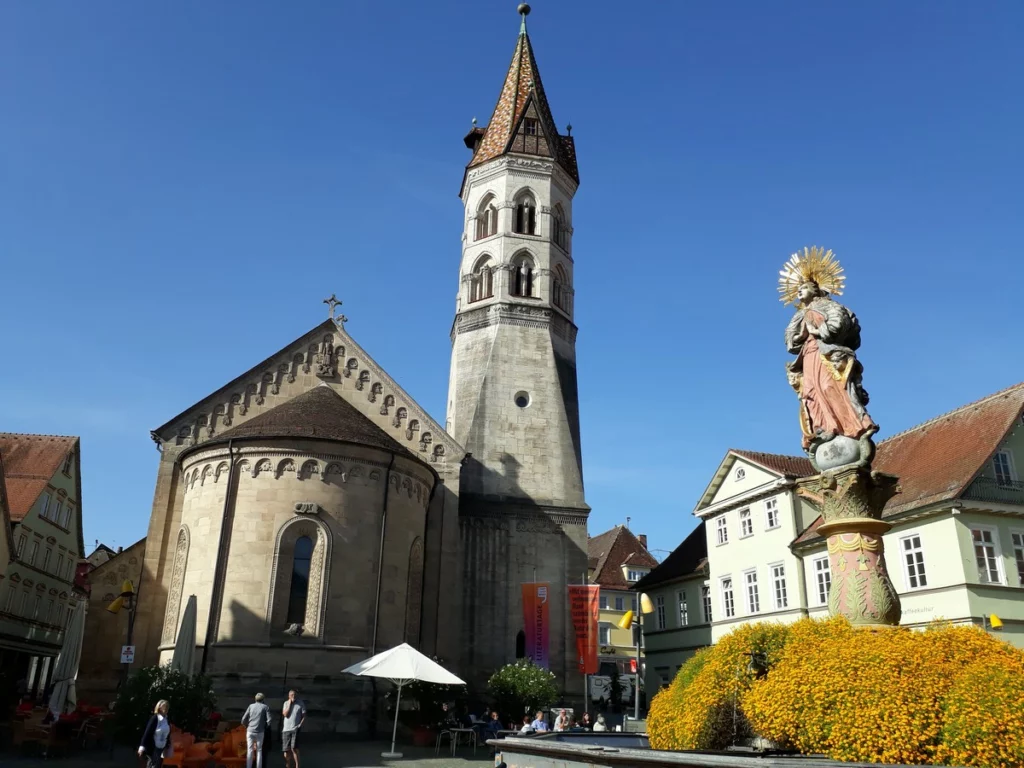
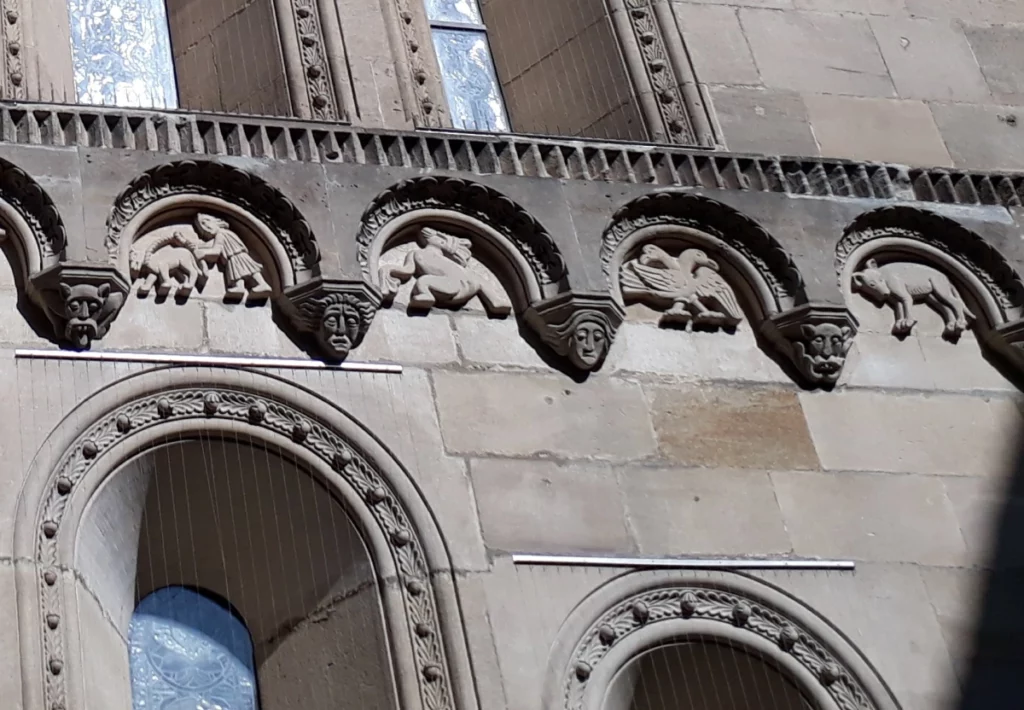




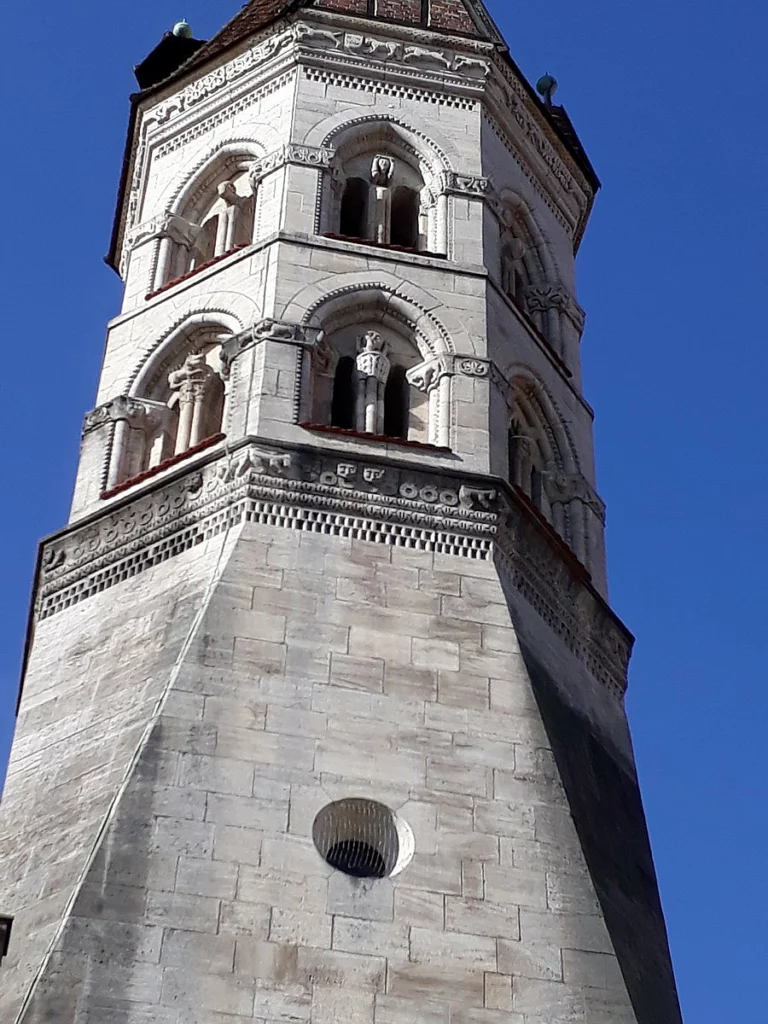
In front of the Church of St. John’s Market Square, at the head of which is the town hall. The town hall was built in the 18th century, as the old one did not survive the fire. During Advent, the windows of the town hall turn into an Advent calendar.

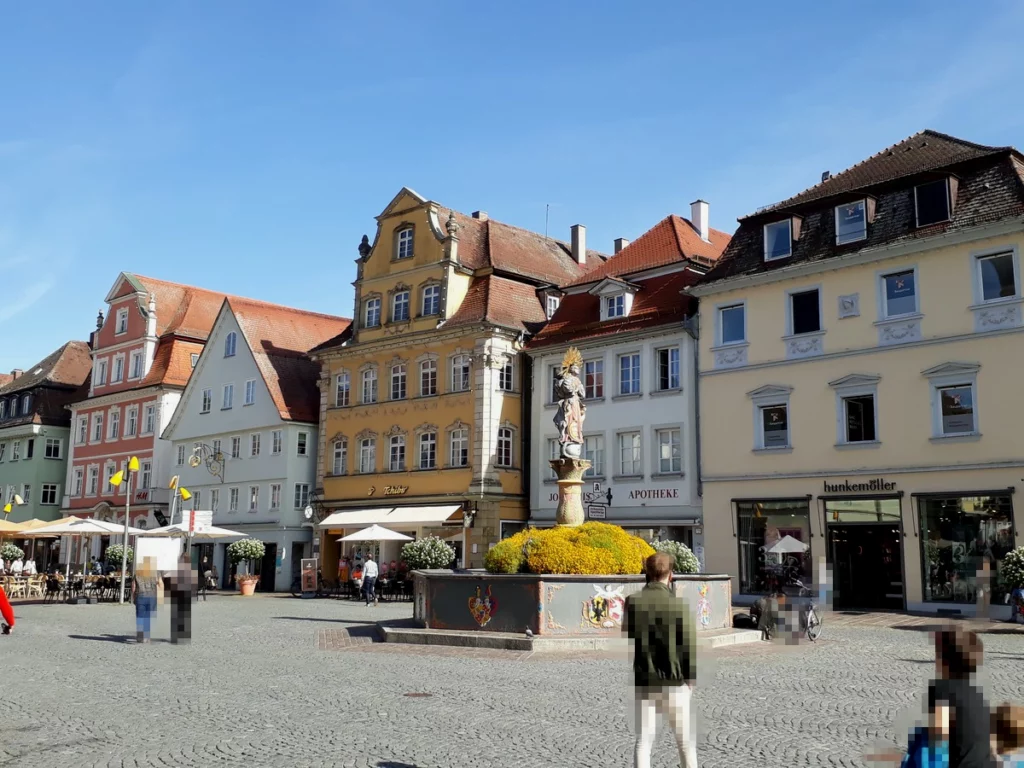
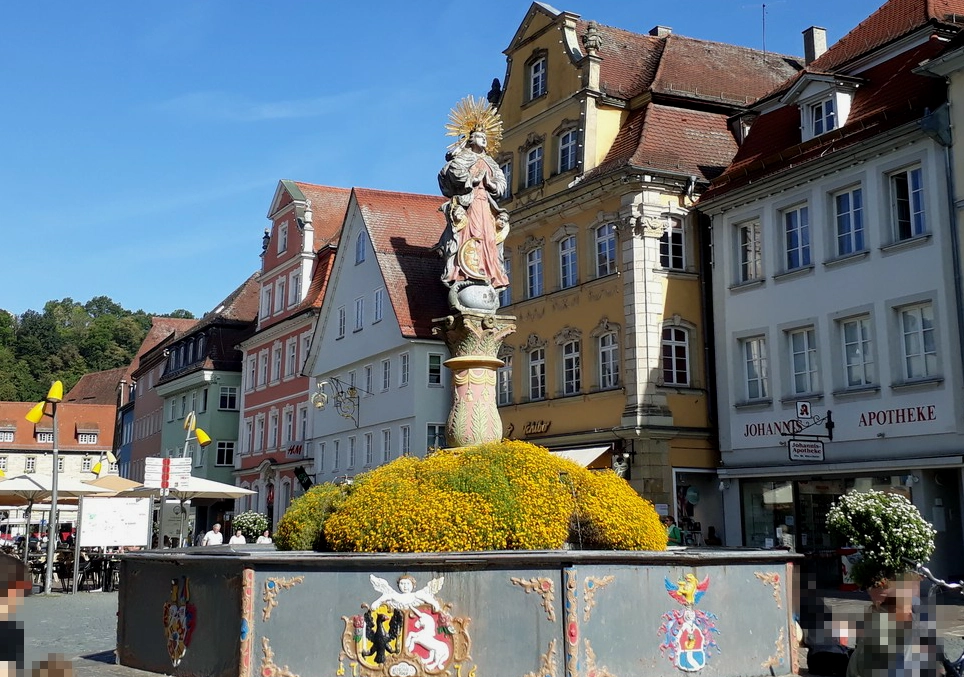
Opposite the town hall on the other end of the place is the so-called Hospital of the Holy Spirit, whose buildings date back to the 15th (half-timbered) and 16th centuries. Once it was a hospital of the Order of Hospitallers, now it is a complex of buildings for various purposes: a library, a nursing home, an information center.
What can you visit in Schwäbisch Gmünd besides the old center?
- Regional Museum Prediger, located in a former Dominican monastery. Typically for a regional museum, a diverse local collection: architectural details, church treasures, archaeological finds
- jewelry factory museum. Schwäbisch Gmünd was famous for its jewelers.
- shadow theater museum
- pilgrimage church of St. Salvator (16th century), rebuilt from existing caves. One of the walls seems to grow out of the rock. Unfortunately, we were already tired going down the mountain and did not manage the full climb to the church.

- castle Hohenrechberg. The 13th century castle is well preserved. The castle has top views of the Swabian Alb in general and the Three Kaiser Mountains region in particular. Three Kaiser Mountains (Drei Kaiserberge) – three hills with the ruins of fortresses, including Hohenstaufen, where the Staufer dynasty came from. In addition to views it has a restaurant and hosts events. You can explore the non-restaurant and non-events part for 2 euros.
Please note that it is not possible to park at the castle
Park Himmelsgarten
Now let’s go upstairs. Next to the park is the Weleda center (natural cosmetics). We didn’t get there, so I can’t say anything about it.
How to go up if you don’t have a car: of course, you can walk, but it’s wiser to go down on foot. The best way to get to the top is by bus 6. Please note that it has three slightly different routes with different final stops. One of them stops right next to the park and the center of Weleda, the other has a terminal close to the park, and the third enters the residential area and from it you can also get to the park, just from the other side.
The park, laid out for a garden exhibition, can hardly be called a park yet – the trees have not yet grown. But there is more than enough entertainment, especially if you are with children:
- adventure golf. Not too fancy, but big and inexpensive.
- rope park
- big water playground
- small garden with dinosaurs
- and the hit of the year – the road for balls (Kugelbahn).
The wood ball can be bought from a vending machine. There are vending machines in the park, at the entrance to the forest and further into the forest.
The ball road goes down the hill through a picturesque gorge that is worthy of a walk in itself. If you have a car at the top, then you can climb along another part of the circular route, without the balls. There are educational stands along the trail. You can walk the route with a stroller. The height difference is significant.
The entire long structure was built in an original way: there are sections with bells, and high-speed descents, and a board on which you need to catch ball’s balance, and multi-track sections. It’s really fun even for older children who are initially skeptical about “toddler” entertainment.
I highly recommend purchasing more than one ball if you are with small children. It’s also a good idea to take a neon marker and mark the balls: with a lot of kids, the balls tend to disappear and get lost.
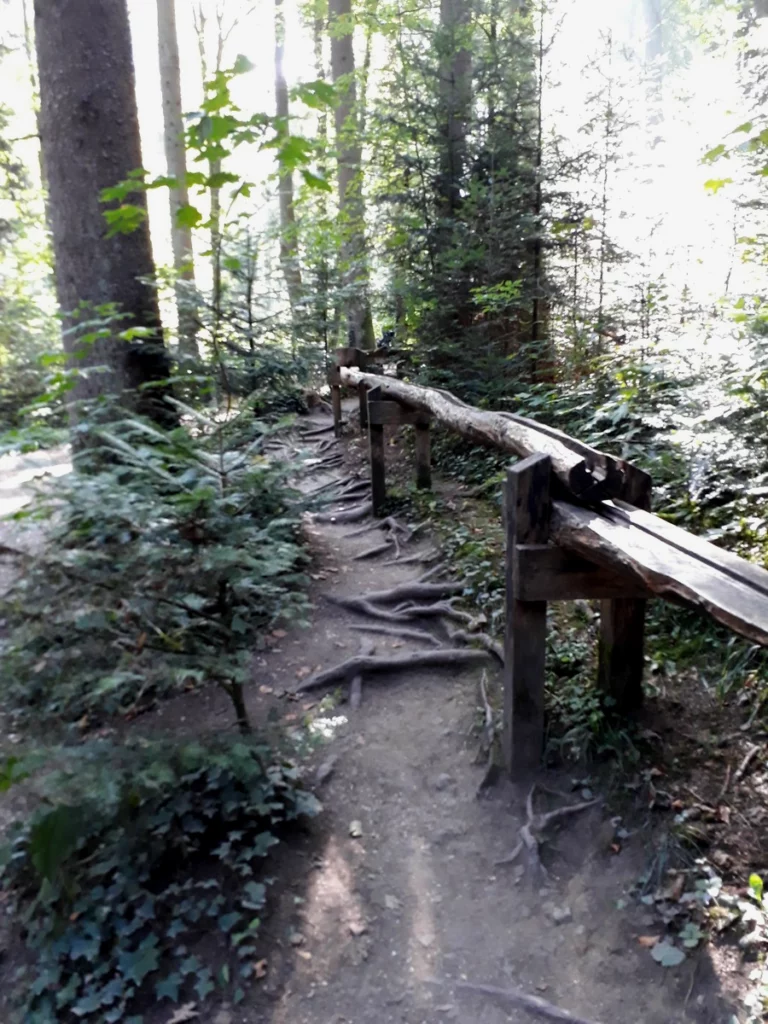
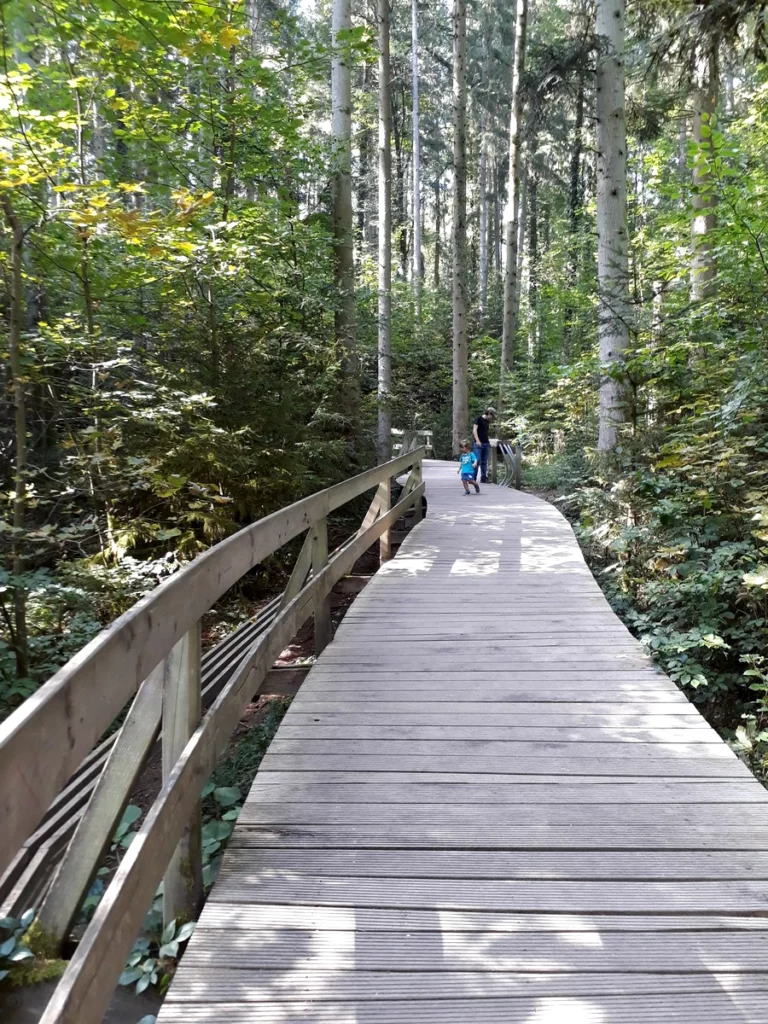
If you add Ellwangen, Lorch and other cities in the region to Aalen and Schwäbisch Gmünd, which can be seen on maps of attractions in the region (links below), you will get a good vacation for at least a week.
From Ulm to Ellwangen. Albtrauf and Bavarian Swabia
Places to visit near Stuttgart. Map
Swabian Alb map
Romantic Franconia
Follow me
Follow me

